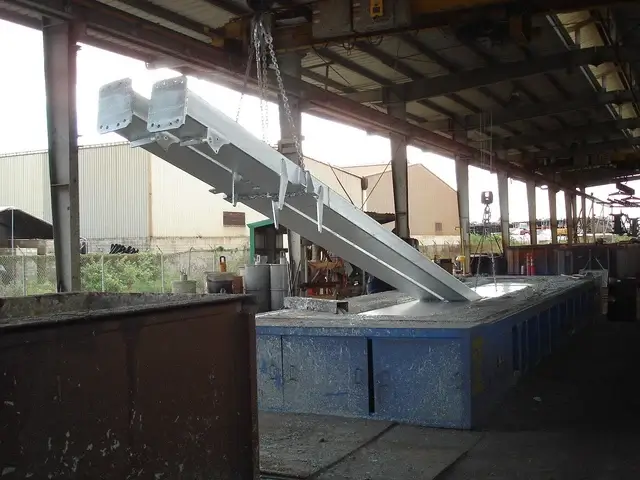Introduction to Hot-Dip Galvanizing
Hot-dip galvanizing, a process widely recognized in the industrial world, plays a crucial role in enhancing the durability and longevity of steel and iron products. This process involves coating metal items with a thin layer of zinc, offering them robust protection against rust and corrosion. This article delves into the details of hot-dip galvanizing, exploring its purpose, process, and diverse applications.
What is Hot-Dip Galvanizing?
Hot-dip galvanizing is a method of galvanization. It involves immersing steel or iron components into a molten zinc bath, creating a metallurgically bonded zinc coating. This coating effectively shields the base metal from environmental factors that lead to corrosion.
Advantages of Hot-Dip Galvanizing
- Corrosion Resistance: The zinc coating acts as a physical barrier and also as a sacrificial anode, offering cathodic protection to the underlying metal.
- Durability: Galvanized steel shows remarkable durability and can withstand harsh outdoor environments for many years without significant degradation.
- Cost-Effectiveness: Considering its long lifespan, hot-dip galvanizing is a cost-effective solution over time compared to other protective coatings.
- Sustainability: Zinc coatings are environmentally friendly, and galvanized steel is fully recyclable, which aligns with sustainable development goals.
The Hot-Dip Galvanizing Process
- Surface Preparation: The steel or iron objects are thoroughly cleaned to remove any impurities, like oil, grease, or rust, usually through a series of chemical and physical cleaning steps.
- Fluxing: The clean metal is then dipped in a flux solution, usually a mixture of zinc ammonium chloride, which helps to prevent oxidation of the clean surface.
- Galvanizing: The prepared metal is immersed in a bath of molten zinc at temperatures around 450°C (842°F). The zinc reacts with the metal to form a tightly bonded alloy coating.
- Cooling and Finishing: After sufficient time in the zinc bath, the items are removed and either air-cooled or quenched in water. The galvanized surface can be further treated with passivation chemicals to enhance its protective qualities.
Applications of Hot-Dip Galvanizing
- Construction Industry: Used in structural steel elements, outdoor fencing, railing, and metallic facades for buildings.
- Automotive Industry: Provides rust protection for car bodies, frames, and various automotive parts.
- Utilities and Energy Sector: Applied in electrical transmission towers, street lamps, and pipeline protection.
- Agriculture and Rural Applications: Utilized in farm equipment, animal pens, and storage structures.
- Marine and Coastal Environments: Galvanized steel is used in docks, bridges, and protective barriers due to its resistance to saltwater corrosion.
Conclusion
Hot-dip galvanizing stands out as a reliable, efficient, and sustainable process for protecting metal from corrosion. Its application across various industries demonstrates its versatility and effectiveness. For businesses looking to extend the life of their metal products while ensuring environmental sustainability, hot-dip galvanizing presents an optimal solution.
Seeking Hot-Dip Galvanizing Services?
If you’re considering hot-dip galvanizing for your project, it’s essential to collaborate with experienced professionals. They can guide you through the process, ensuring that your materials are treated with the highest standards and tailored to your specific needs. Reach out to industry experts today and take a significant step towards enhancing the durability and resilience of your metal products!
Other Articles You Might Enjoy
- Title: Galvanized Steel: Process, Methods, Properties, and Uses
Introduction: Galvanized steel, an innovation in the world of construction and manufacturing, represents a pinnacle in material engineering. It's a process where steel is coated with a protective layer of…
- Laser Cutting Technology Overview: Process, Benefits, and Wide-Ranging Uses
Introduction to Laser Cutting Technology Laser cutting is a precise method of slicing materials using a high-powered laser beam, characterized by its ability to produce clean cuts with smooth edges…
- Beyond Cutting: Exploring the Multifaceted CNC Machining Process
1. Introduction: Unveiling the Layers of CNC Machining In this introductory section, we peel back the layers of the CNC machining process, going beyond the traditional understanding of cutting. It…









